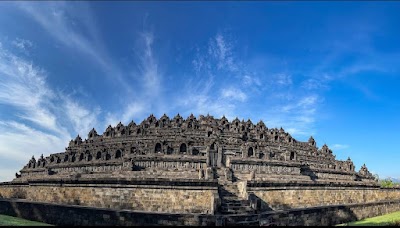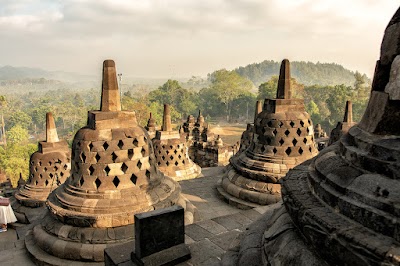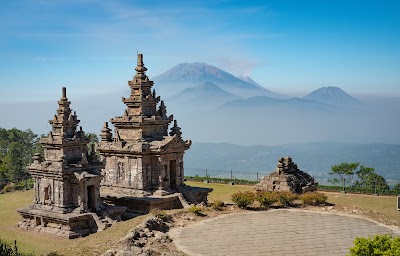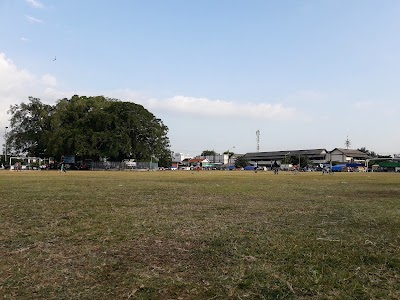Borobudur Temple (Candi Borobudur)
Related Places
Overview
Overview of Borobudur Temple
Borobudur Temple, situated in the heart of Central Java (Jawa Tengah), Indonesia, is a stunning and ancient monument that captivates the hearts of its visitors. As a celebrated UNESCO World Heritage site, Borobudur is renowned not just for its impressive scale but also for its intricate architecture and deep historical significance.
Historical Significance
Constructed during the 8th and 9th centuries under the Sailendra Dynasty, Borobudur stands as a testament to the region's rich cultural and religious heritage. This colossal stupa, designed in the form of a step pyramid, is unique among Buddhist monuments worldwide. With a base that spans approximately 118 meters on each side and a towering height of 35 meters, Borobudur proudly holds the title of the largest Buddhist temple in the world.
Architectural Marvel
The temple's design consists of nine stacked platforms—six square and three circular—topped with a central dome. This layout symbolizes Buddhist cosmology, illustrating the journey toward enlightenment. Visitors ascend through three symbolic levels, representing the realm of desires (Kamadhatu), the realm of forms (Rupadhatu), and the realm of formlessness (Arupadhatu). As one ascends, a sense of tranquility envelops them, culminating in the serene upper terraces, which house seventy-two stupas, each containing a statue of the Buddha.
Reliefs and Statues
One of the most captivating features of Borobudur is its extensive collection of over 2,600 relief panels and more than 500 Buddha statues. These reliefs depict various scenes from Buddhist teachings, including the life of Siddhartha Gautama and Jataka tales (stories of the Buddha's past lives). Far from being mere decorations, these panels serve as didactic tools, guiding practitioners and pilgrims on their spiritual journeys.
Historical Rediscovery and Restoration
Beyond its religious significance, Borobudur plays a crucial role in the study of Indonesian history and art. Abandoned in the 14th century after the decline of Buddhist and Hindu kingdoms in Java, the temple was eventually engulfed by volcanic ash and dense jungle. It wasn't until the early 19th century, during British colonial rule, that Borobudur was rediscovered. Restoration efforts began in earnest in the early 20th century and continued into the late 1970s, culminating in its designation as a World Heritage site in 1991 by UNESCO.
Visiting Borobudur
Today, Borobudur remains an active site for worship and tourism, attracting millions of visitors each year. Many come to marvel at its grandeur or participate in Vesak (Waisak), the most significant Buddhist festival celebrating the birth, enlightenment, and death of the Buddha. During this festival, the temple becomes a vibrant site of processions, with thousands of monks and devotees chanting and carrying candles as they make their way to the monument.
Best Time to Visit
When planning your visit to Borobudur, arriving early in the morning is highly recommended to witness the breathtaking sunrise. Watching the first light illuminate the temple and the surrounding misty landscapes is an unforgettable experience. The site is conveniently accessible from Yogyakarta, a city known for its rich cultural heritage and bustling arts scene, making it an ideal day trip for travelers.
Exploring the Surroundings
In addition to exploring the temple itself, tourists can visit nearby museums, such as the Karmawibhangga Museum, which showcases archaeological finds and provides context on the history and restoration of Borobudur. Another nearby attraction is Mendut Temple, a smaller yet significant Buddhist site just a few kilometers away, featuring impressive statues and carvings.
Engaging with Local Culture
For those interested in local traditions and daily life, exploring nearby villages can be a rewarding experience. Visitors can engage with local artisans skilled in crafting traditional Javanese batik, pottery, and silverware. Participating in these cultural exchanges not only enriches your travel experience but also supports the local economy.
Conclusion
In summary, Borobudur Temple is more than just a historical monument; it is a living testament to Indonesia's rich Buddhist heritage. Whether you're a history enthusiast, a spiritual seeker, or simply someone who appreciates breathtaking architectural artistry, Borobudur offers a profound and enriching experience that is sure to leave a lasting impression.






